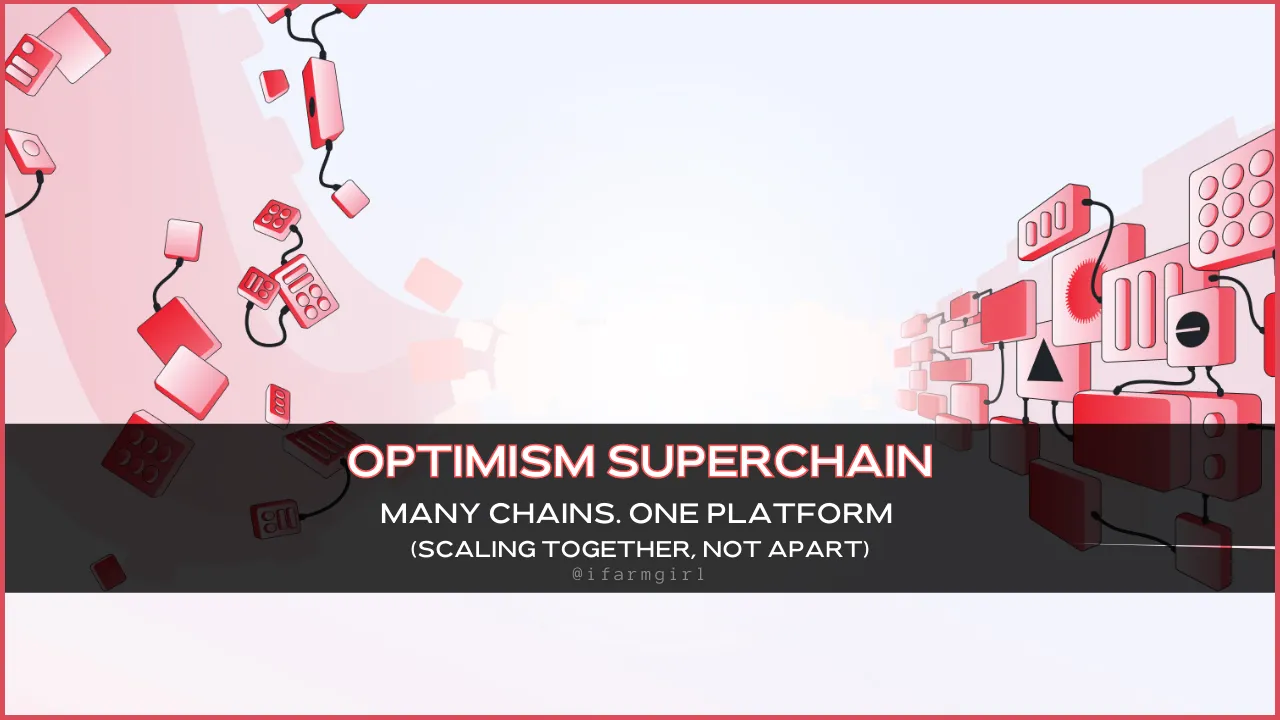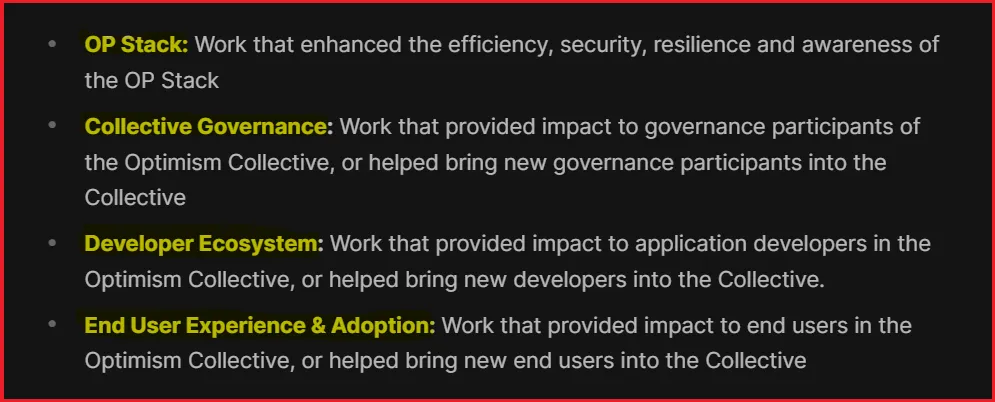Optimism, one of the largest and most popular Layer 2 (the open-source project that has the most forks of any L2 on the Ethereum chain) has initiated (conceptualize) building the next major scalability improvement to its OP Stack after Bedrock.

They call it Superchain, described as "a unified network of chains that share bridging, decentralized governance, upgrades, a communication layer, and more - all built using the OP Stack." In this concept, projects built within the network would scale together and not apart.¹
It isn’t just about creating many chains–it’s about uniting them into a single network.²
The concept intends to solve the scalability issues and architect a truly scalable blockchain where, and I quote:
Developers would not need to worry about the backend infrastructure their app exists on because the chain guarantees correct execution, uptime, and horizontal scalability (opens a new window) of their app.
Due to the shared smart contract execution environment, composability would be supercharged far beyond the capabilities of traditional REST APIs.
With standardized gas markets, developers are not required to front all infrastructure costs for their users. Paying for a viral application would no longer be a barrier to entry for app devs, and more monetization strategies would be unlocked.³

So what is Superchain
Superchain is a horizontally scalable network of chains that share security, a communication layer, and an open-source development stack.⁴
It is a permissionless system where new chains can be deployed to a shared network that allows massive scalability and where there's a revenue model that rewards developers for the fees that their projects generate and for the public goods that they create.
Accordingly, it will be built on top of the OP Stack codebase which is a cutting-edge modular stack that sets the standard for decentralized infrastructure. "It's fast, simple, and built to serve as a reliable foundation for building chains - not just optimistic. Not just rollup. It seeks to integrate siloed Layer 2s into a single interoperable and composable system. It aims to create a future where launching an L2 is as easy as a plug-and-play kind of thing or as straightforward as deploying a smart contract to Ethereum today."⁵ More like a plug-and-play kind of code.
These chains foundationally have the same technical and social fabric; which means no more bridging and no more network switching.⁶
Superchain can blossom into a sprawling network that maximizes interoperability, shares decentralized protocols, and standardizes its core primitives–all while funding the public goods which enable it.⁷
Here's how Optimism described Superchain:
Superchain is a network of many chains in one platform (network), built on an overpowered stack that's proudly a public good.
The OP Stack is a fully open-source public good and revenues generated by OP Mainnet, and eventually the Superchain, are used to fund the public goods which enable it. And that is made possible through Retroactive Public Goods Funding or RetroPGF.⁸

What is RetroPGF
Retroactive Public Goods Funding or RetroPGF is "Optimism’s mechanism to support the creation of a truly free, open, and decentralized internet that returns value to the people who create and maintain it."⁹
This is a series of experiments where members of the Citizens’ House allocate protocol profits or portions of the token treasury to projects they deem have provided substantial public good along certain criteria. RetroPGF is based on the idea that it’s easier to determine what was useful than to issue proactive grants for what might be useful.
Optimism Collective aims to make this (RetroPGF) fully reliable and as a source of funding that builders can depend on and where public goods are rewarded with profits equal to their impact.¹⁰
In short, RetroPGF is the system that rewards (or funds) projects or developers who have built or contributed useful applications to the Optimism ecosystem.
Rounds 1 and 2 of funding have concluded where $1 million and $10 million have been rewarded for various projects that built and contributed to the ecosystem.
The 3rd round of RetroPGF will distribute 30 million OP tokens to those who will supported the development and adoption of Optimism in various categories:


Summary (TL;DR)
Optimism Superchain is being built to solve the scalability issues being faced by most blockchains today. It intends to create a single network where many projects can be deployed yet share everything - bridging, decentralized governance, upgrades, communication layer, and many more - using the OP Stack (reliable, standardized, open-source set of software that developers can freely use to create highly scalable, highly interoperable blockchains of all kinds).
While this may be a concept but it's already being worked on by OP Labs developers and others including Coinbase and Lattice. And they are encouraging projects to join them. The more chains, the better so they can scale horizontally, together.
The idea of the Superchain is like having a country (network) with many islands (chains) where people (users and developers) can easily go or travel to (use, build into, transact, bridge, etc.) without having to go through many barriers (fees, infrastructure costs etc).
Along with the already existing OP Mainnet, Base, Coinbase's own layer 2 blockchain has been deployed on the Superchain.
Projects and or developers who contribute to the Optimism ecosystem are eligible for funding from the RetroPGF.

Personal Thoughts
Optimism has been an open-source project. Its goal to create a Superchain is quite noble in my opinion. I think it encourages people to be unified, build and together solve the issues of scalability and also to create a truly decentralized, thriving blockchain where not only developers can easily deploy apps without any barriers but also be rewarded for their contributions.
For infotainment only. Sources: Optimism Superchain/Docs Explainer/Coingecko/Optimism Mirror/OP Docs

Lead image created on Canva. Photo/s from Superchain. No copyright infringement intended. 14082023/10:22ph